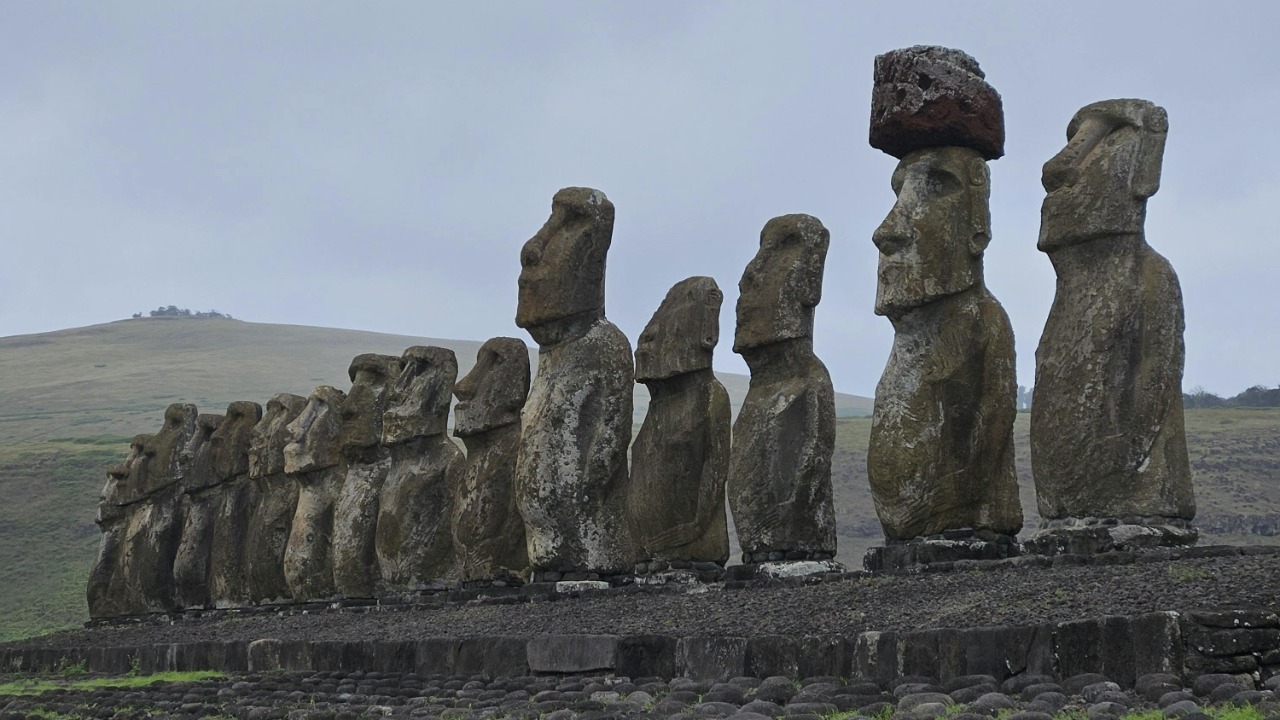
In a surprising turn of events, a new moai statue has been discovered on Easter Island in 2025, challenging previous archaeological assumptions and potentially reshaping our understanding of the island’s history. This recent finding, along with the unearthing of a statue from a dried lake in 2023, a fresh theory about the iconic heads, and new insights into the ancient rongorongo script, collectively challenge established narratives of Easter Island’s history.
The Sudden Emergence of a New Moai Statue
The unexpected appearance of a new moai statue on Easter Island in 2025 has left archaeologists puzzled. The sudden visibility of the statue defies prior archaeological expectations and raises questions about potential environmental changes or overlooked sites. The physical details of the statue, including its location and condition, have been highlighted in reports that emphasize the peculiarity of such a discovery in the context of decades of surveys.
Initial expert reactions to the find have been mixed, with some suggesting that it links to broader patterns of moai preservation and the need for renewed excavations. The sudden emergence of this statue underscores the potential for further discoveries and the importance of ongoing research on Easter Island.
Earlier Revelations from a Dried Lake Bed
In 2023, a new moai statue was uncovered in a dried lake on Easter Island, revealing the statue’s estimated size and features. The environmental conditions that exposed it and the archaeological techniques used in the dig, such as ground-penetrating radar and manual excavation, have provided valuable insights into the statue’s burial depth and cultural significance, as reported by the Smithsonian Magazine.
This find has significantly contributed to the ongoing efforts to catalog all moai, adding to the total known statues and influencing restoration priorities. The discovery from the dried lake bed underscores the potential for further revelations about the island’s past.
Debunking the Myth of Societal Collapse
New findings in 2024 have challenged the popular myth of Easter Island’s inhabitants causing their own downfall through overexploitation. Instead, evidence of sustainable practices has been presented, suggesting a different narrative about the island’s history. Research including pollen analysis and resource modeling has rewritten the timeline of environmental impacts and human adaptation on the island.
These findings have significant implications for global narratives on island ecology, shifting the blame from indigenous practices to external factors like introduced species. The debunking of the societal collapse myth has opened up new perspectives on the history of Easter Island.
A Fresh Theory on the Iconic Statue Heads
A 2025 theory suggests that Easter Island’s famous moai heads were originally fully buried with bodies below ground. This theory, supported by erosion patterns and excavation evidence, has been introduced in a report that also describes the historical context of the statues’ partial exhumation by early explorers.
The new theory provides a fresh perspective on the design and symbolic role of the moai in Rapa Nui culture. It also has the potential to rewrite historical estimates of labor and resources needed for construction during the 13th to 16th centuries.
Unraveling the Origins of Rongorongo Script
A 2025 study has offered new insights into the origins of the ancient Easter Island script known as rongorongo. The study includes linguistic comparisons to other Polynesian systems and analysis of key artifacts such as wooden tablets with glyphs. Radiocarbon dating methods have placed the creation of these artifacts around the 17th century, as reported by Artnet News.
These findings could connect rongorongo to broader Pacific writing traditions, potentially altering views on Easter Island’s isolation and cultural exchanges. The study offers a fresh perspective on the island’s rich cultural history and its connections with other Polynesian cultures.
Implications for Easter Island’s Broader History
The 2025 statue discovery and the new theory about the moai heads together challenge assumptions about moai transportation and erection techniques in pre-contact Rapa Nui society. The role of climate and human activity in exposing these artifacts also draws parallels between the 2023 lake find and recent events, highlighting future preservation challenges.
The 2024 debunking of the societal collapse myth and the 2025 study on rongorongo script redefine Easter Island as a resilient cultural hub rather than a cautionary tale of collapse. These findings underscore the importance of ongoing research in reshaping our understanding of Easter Island’s history.
More from MorningOverview